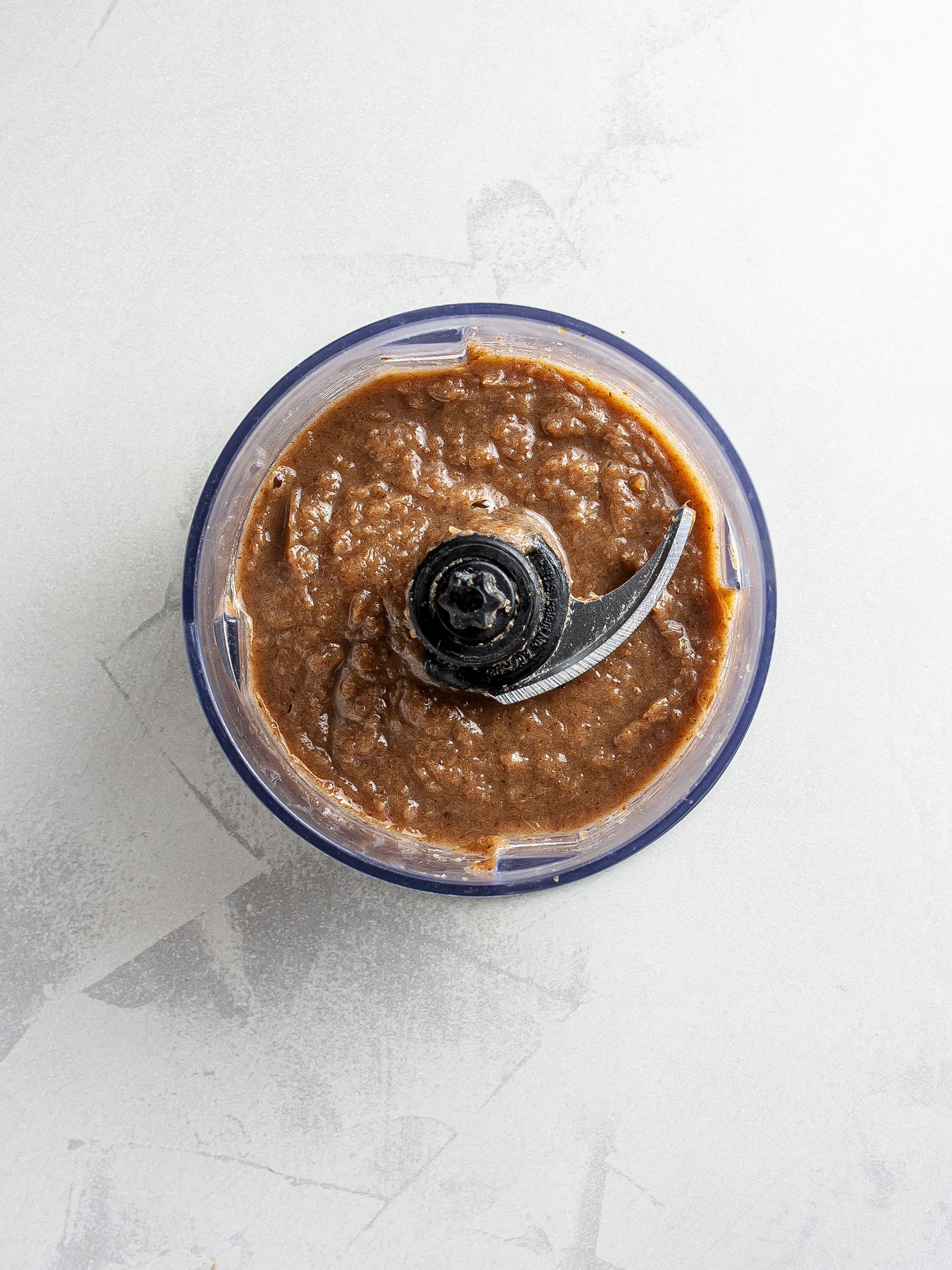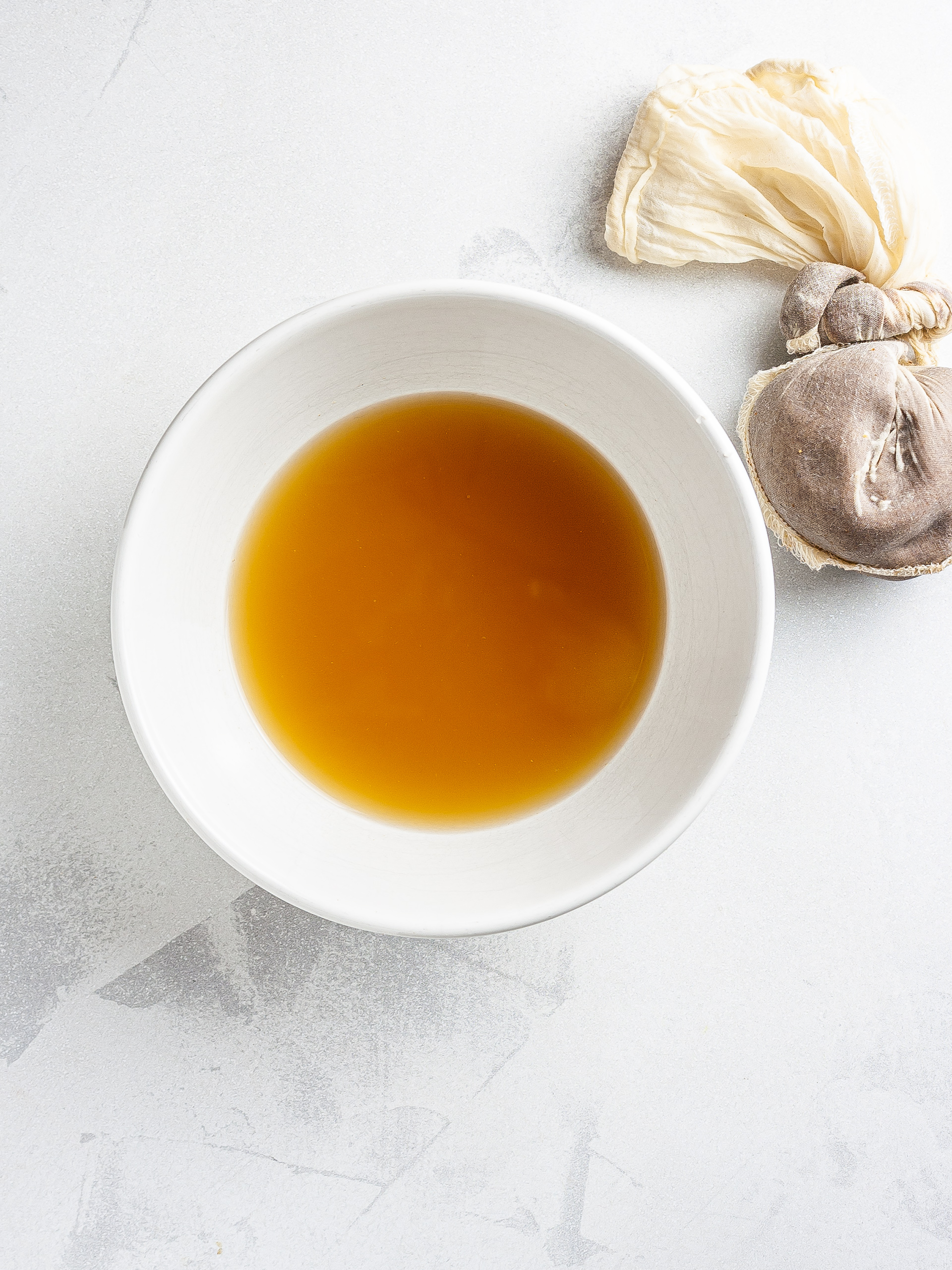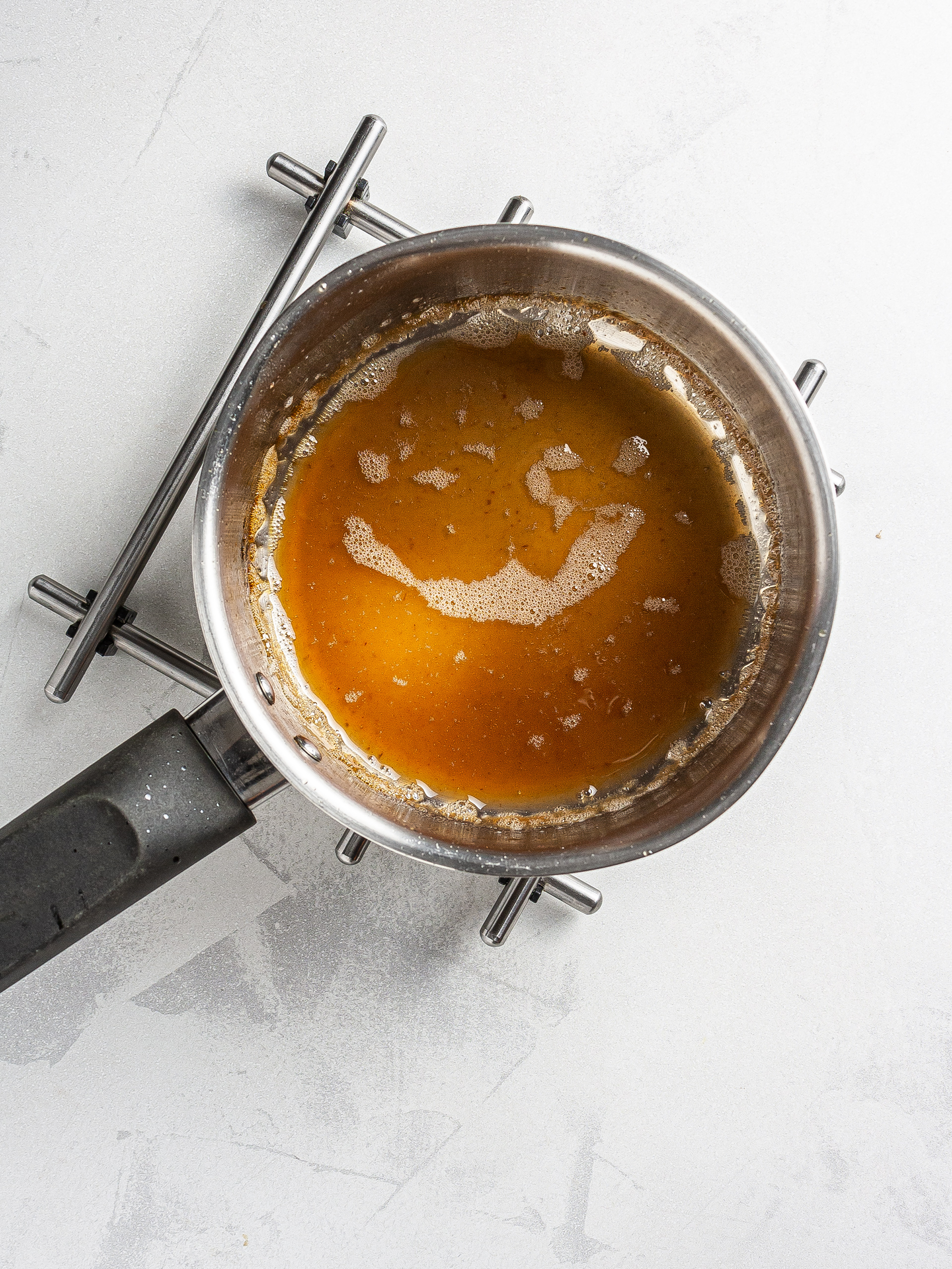Do you know that perfect caramel that you get by cooking white sugar in water? Well, today we'll show you how to make the same vegan sauce using only one ingredient: raw dates (and water).
This date caramel contains no heavy cream, no butter, no coconut oil or nut spreads. It's the proper caramel syrup that you use in creme brulees and flans. But instead of using refined sugars, it uses the natural sugars contained in dates.
To do it, we have reversed engineered the classic caramel recipe: instead of dissolving white sugars in water, we have extracted sugars from the dates. We have precise instructions on how to do that below. It's easy!
So what is the advantage of making caramel using dates? Well, date caramel is:
tastier. When eating classic caramel, you are just eating sugars. With date caramel, you are eating pure dates in the form a sticky syrup.
healthier. With classic caramel, you are just eating refined sugars and a bit of water. With date caramel, you also get a good amount of the nutrients you get from raw dates. Plus you get a fraction of the calories that are in traditional caramel, weight for weight.
fun. Turning raw dates into caramel makes you feel like a mad genius chemist. It's going to make your day, guaranteed!
If you want to learn more about why using dates as a sweetener is healthier than using refined sugars, or about the process of making caramel, check out the FAQ section below.
We compared 100g of traditional caramel with our homemade date caramel. We found that date caramel prepared this way has:
50% fewer calories
50% fewer sugars
We wrote in-depth instructions below on how to make it yourself, so just follow along and you'll have it done in a blink! And if you are looking for a recipe to try this with, check out our vegan Vietnamese coffee flan.
NOTE: The default ingredients yield about 80g (2.8 oz) of caramel and one serving consists of one 20g (0.7 oz) spoon.
Can you make real caramel without using sugar?
First things first: caramel and caramel creams are not the same thing. There are quite a few recipes out there making caramel sauces using a variety of ingredients (whipped cream, butter, nut spread, coconut oils).
To make actual caramel, you only need two things: sugar and water.
So can you get caramel without using refined white sugars? It turns out you can! We have done it in our recipe above using only raw dates.
What is the process of making caramel without white sugars?
In simple terms, caramel is the result of boiling sugars and water until they reach a certain temperature (around 200C). Then, by rapidly dropping the temperature, the sugars crystalise. While that happens, you whisk vigorously to break the crystals and are left with a viscous sauce, known as caramel.
The process is almost identical when making date caramel, but due to a different density of the solution, the reaction temperatures and timing required change.
In the classic recipe, you pour cold water over the boiling sugary solution, to drop the temperature.
We experimented using this technique with our date caramel and found that it also works, but not as well.
The reason is that our date-sugar solution has a different density and starts evaporating and crystalising rapidly at around 105°C, not 200°C. Therefore, adding cold water into the boiling date solution doesn't produce the same strong reaction it does when using white sugars. Instead, it can cause the date caramel to become overly diluted.
We have come up with a different way to drop the temperature without diluting the caramel: giving the hot pan a cold water bath. We show you how to do this in step 4.
Making date caramel is truly a fascinating cooking experiment. We have written very clear instructions in the recipe so that you can get it done without any problems.
Is this date caramel healthier than the classic one?
Classic caramel is prepared with white sugar and water, in ratio 2:1. Our caramel instead, uses raw dates and water in ratio 1:2.
When we compare the sugars found in granulated sugar and those found in dates we can see that in both cases they're made up of 50% glucose and 50% fructose. However, while 100 grams of table sugar contain 99.9g of sugars, the same amount of dates has only 66g of sugars.
Therefore, weight-by-weight, dates pack already fewer sugars.
Moreover, when we filter the date syrup, we are leaving behind most of the date flesh in the cheesecloth, about 70%. This means even fewer calories and sugars end up in the caramel.
Therefore, compared to the same portion of the classic caramel sauce, a 20g (0.7 oz) serving of our date caramel has half the calories and sugars [1].
Ingredients
| Pitted Dates | 200 g |
| Water | 400 mL |
Step 1
Add the pitted dates and water to a pot and bring to a boil over low heat. Simmer, covered, for 15 minutes (1).
This step is crucial to extract all the date sweetness in the water.
Then, transfer all to a food processor and blitz until you have a smooth date cream (2).


Step 2
Now, it's time to filter out the date syrup.
To do so, you'll need a cheesecloth, nut bag, or a thin cotton handkerchief.
Pour the date cream into the bag and squeeze it tightly to drain the water out and into a bowl.
You can use the leftover date flesh to make some delicious energy balls.

Step 3
Next, transfer the extracted date syrup into a saucepan, making sure the liquid is not more than 1/2 cm (1/5 inch) deep. So, if needed, use a larger pot or do this step in batches.
Bring the syrup to the boiling point over medium heat. Avoid stirring it, but instead, gently tilt the pan to swirl the liquid around.
The syrup will reach a temperature of about 105°C (210°F).
When the surface is covered in frothy bubbles, and the syrup has darkened, the caramel is ready.
The whole process will take about 8 minutes.

Step 4
Finally, to speed up the crystallization process, dip the pot with the caramel in a cold water bath.
Whisk until it's thick and then transfer it into a jar.
You date caramel is now ready to be used or stored away.

Tips
If the caramel is too runny, put it back into the saucepan and heat it to the boiling point. By allowing excess water to evaporate, you'll be able to thicken the caramel.
